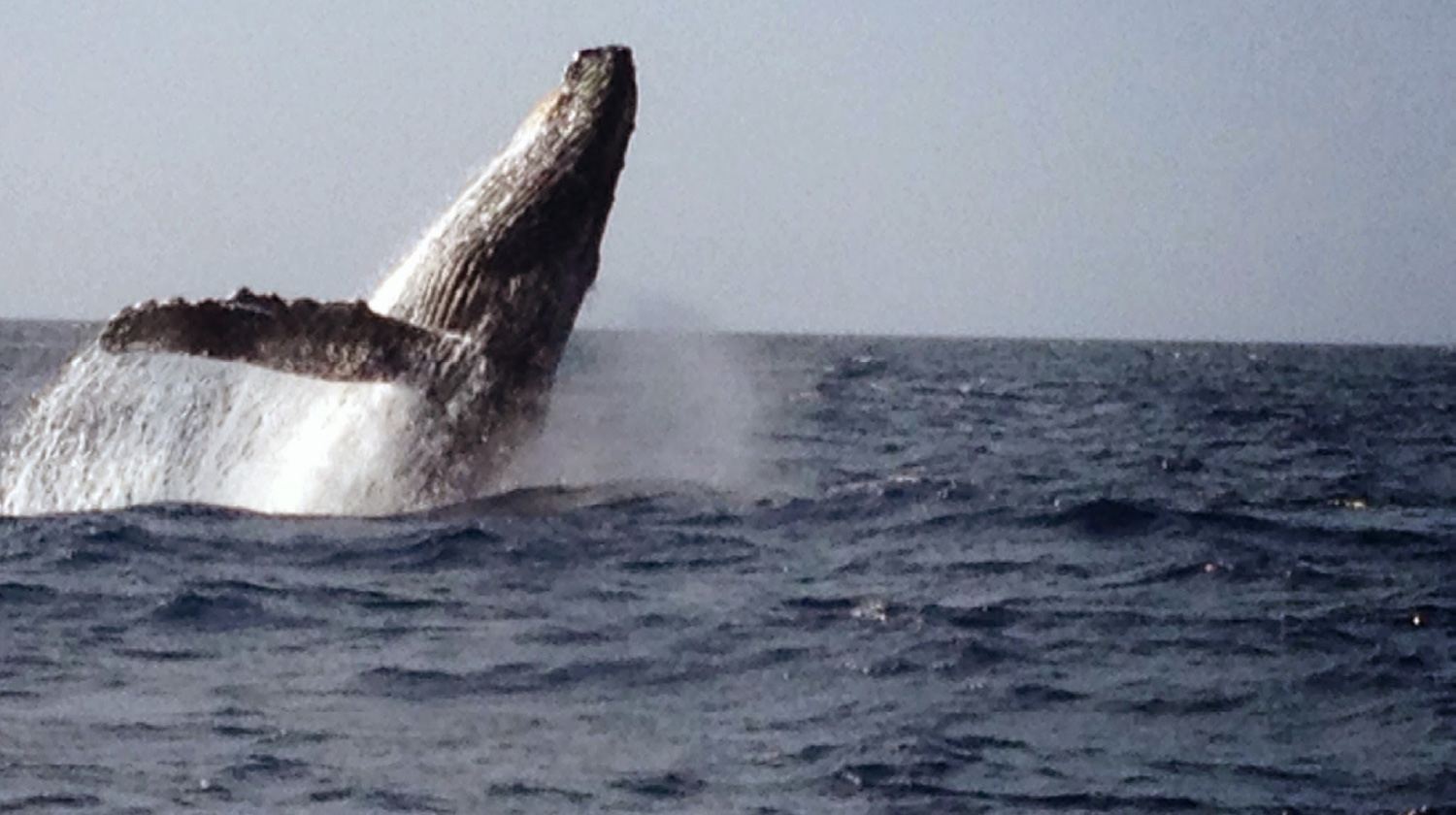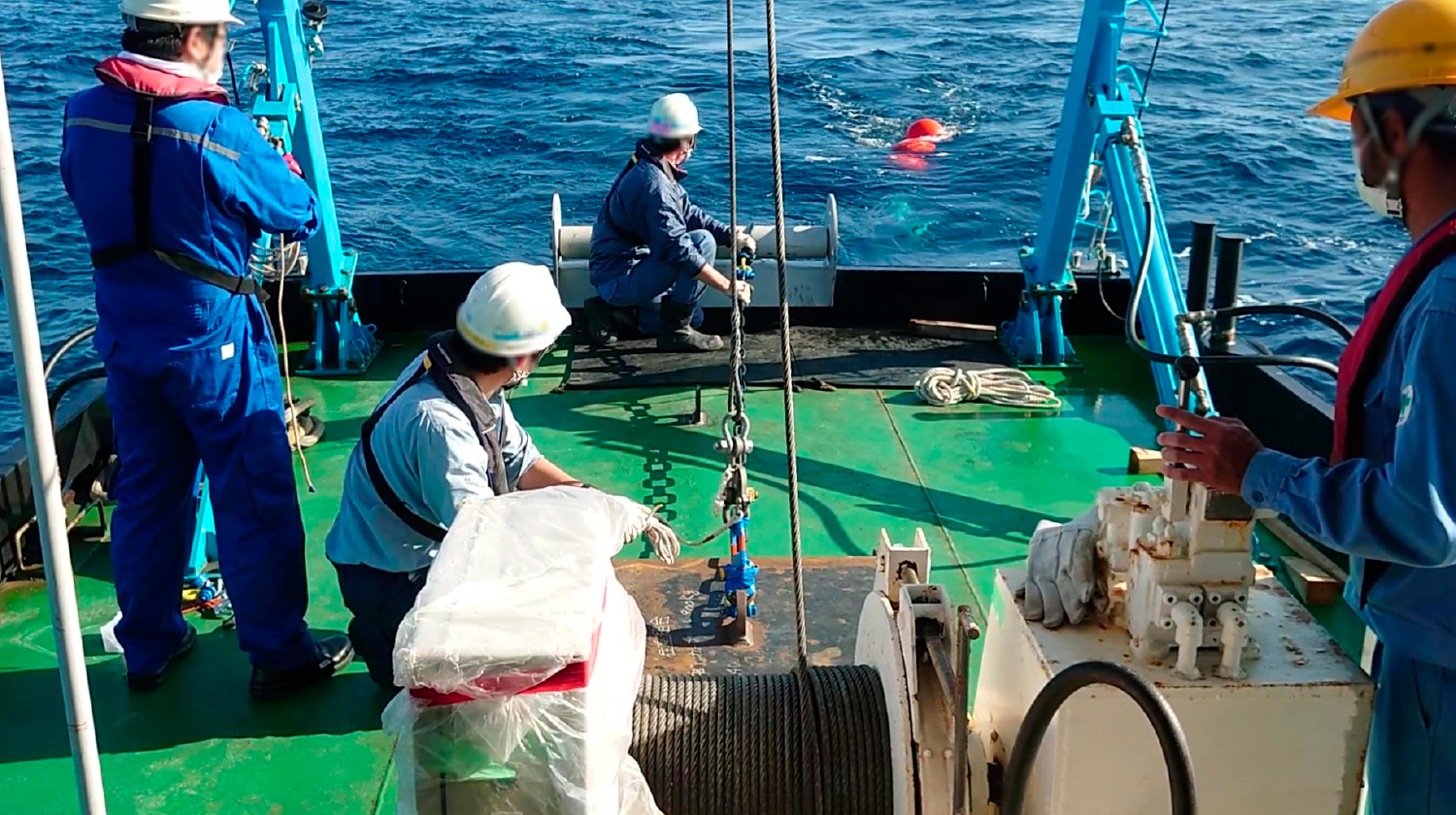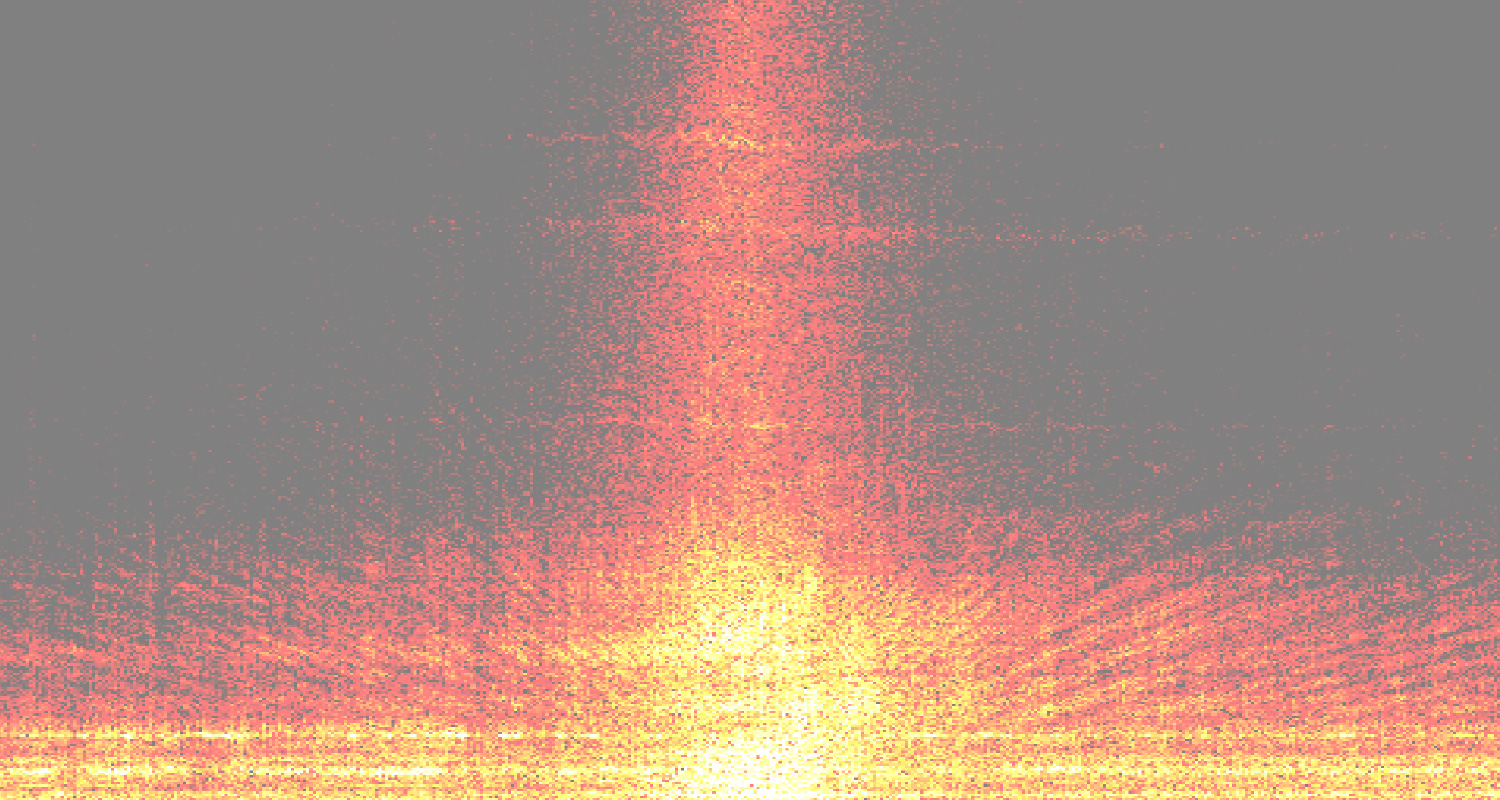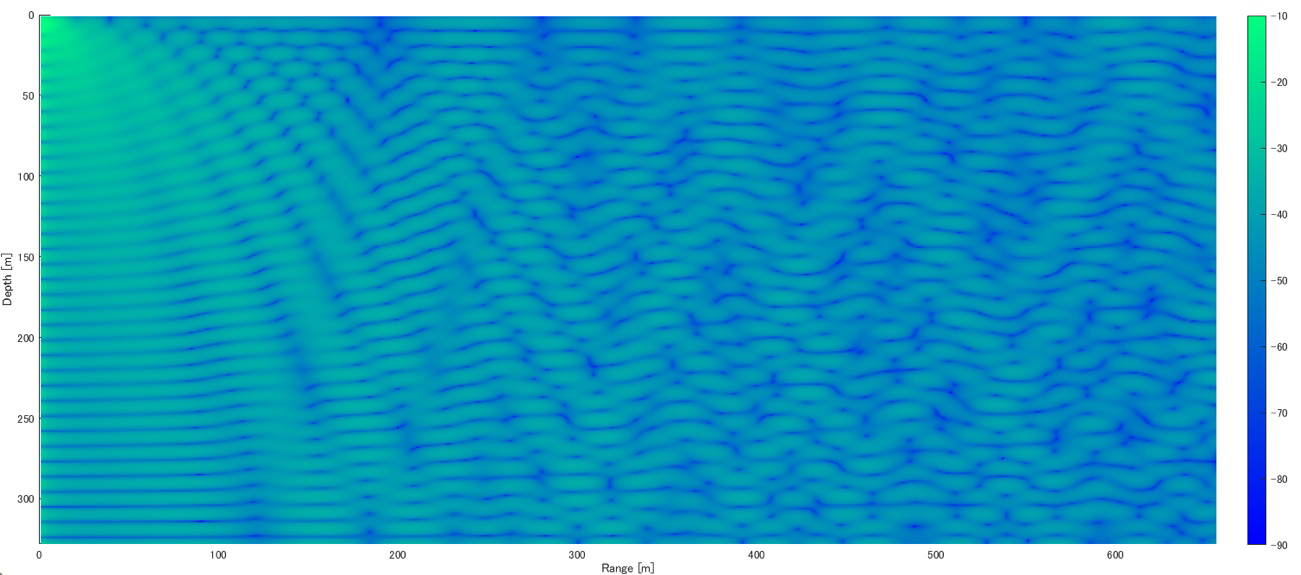
Underwater Radiated Noise from Ships
Index
Concerns about the impact of underwater radiation caused by human activities on marine ecosystems are widespread, especially among environmental groups. Since the frequency of underwater radiation sounds of ships is close to the frequency of whale sounds, the International Maritime Organization (IMO) is about to start discussions on underwater radiation sounds of general merchant ships and its effect on marine ecology. Balancing the system is a major issue. In order to find a solution to the above problem from a scientific point of view, our laboratory has been working in collaboration with related organizations on, on-site measurement of underwater radiation sound from target vessels and investigating of its effects on marine mammals.

Humpback whales in the waters near Ogasawara, taken during past research
On-site measurement of underwater radiation from ships
Two months after installing three hydrophones at a depth of about 330m off Izu Oshima from November 2020 to January 2021 in order to know the difference in underwater radiation sound of general commercial ships depending on the ship type, speed, and year of construction, the underwater sound was recorded.
(Survey research on examination of measures against underwater noise in ships, Japan Ship Technology Research Association 2020-)

Hydrophone installation work off the coast of Izu Oshima
In the above measurement, we were able to record the underwater sound of more than 250 ocean-going vessels. The figure below shows the time variation of the sound level when a ship sails near the hydrophone. The vertical direction represents the frequency, with the lower part of the image having a lower frequency and the upper part having a higher frequency. The horizontal direction represents time, and the right direction is positive. The bright colors near the left and right centers of the image indicate that the vessel is closest to the hydrophone. In this measurement, it was confirmed that low-frequency sound propagates relatively far near the sea surface.

Spectrogram when a ship sails near the hydrophone
Estimating the sound source level of a ship based on acoustic propagation calculation and reducing underwater radiation sound
There are two methods for estimating underwater sound propagation: a method based on simple energy diffusion and a method based on the wave equation. As an example of the former, propagation loss based on spherical energy diffusion \(TL\) is calculated using the distance from the sound source \(r\) from the following equation,
This is also used to estimate the sound source level of ship underwater sounds, as it gives a good estimate in the range close to the sound source. As an example of the latter, the estimation result of the propagation loss of underwater sound using the normal mode method is shown in the figure below. The vertical direction represents the water depth, the horizontal direction represents the horizontal distance, and the sound source is on the upper left of the image assuming a ship. Since this method can take into account the wave nature of sound wave propagation, changes in the speed of sound due to reflections on the water surface and seabed, and refraction are also taken into account.

Estimating underwater sound propagation in the measured sea area using the normal mode method